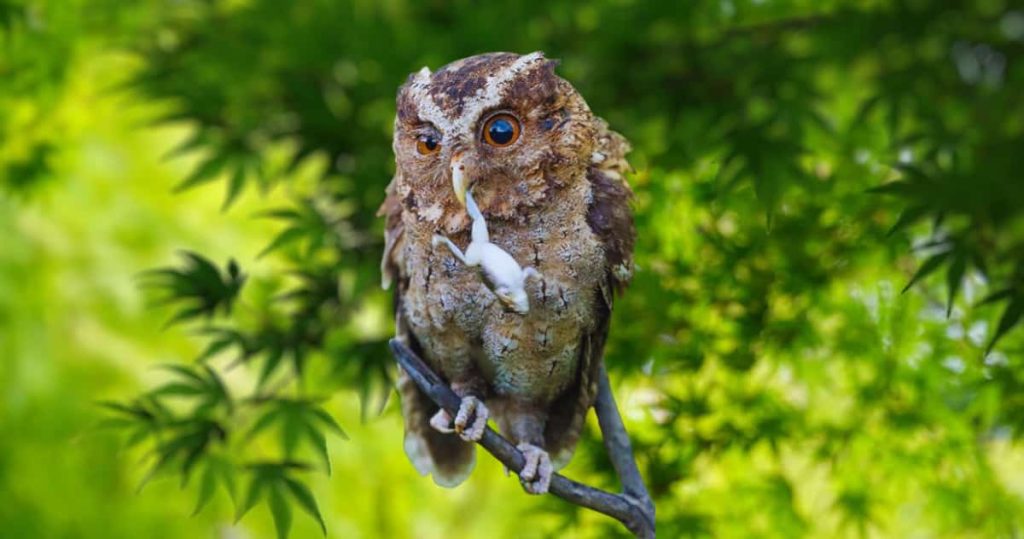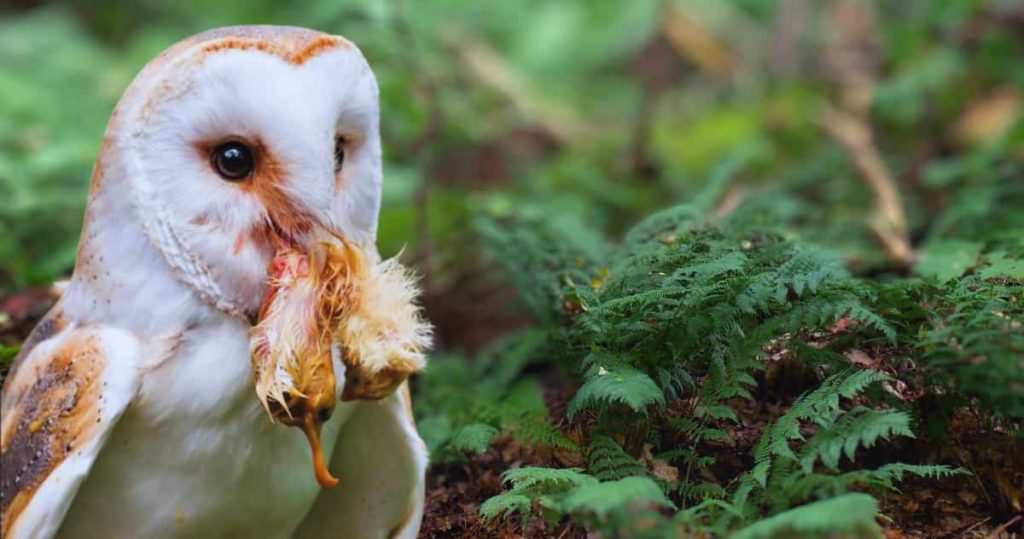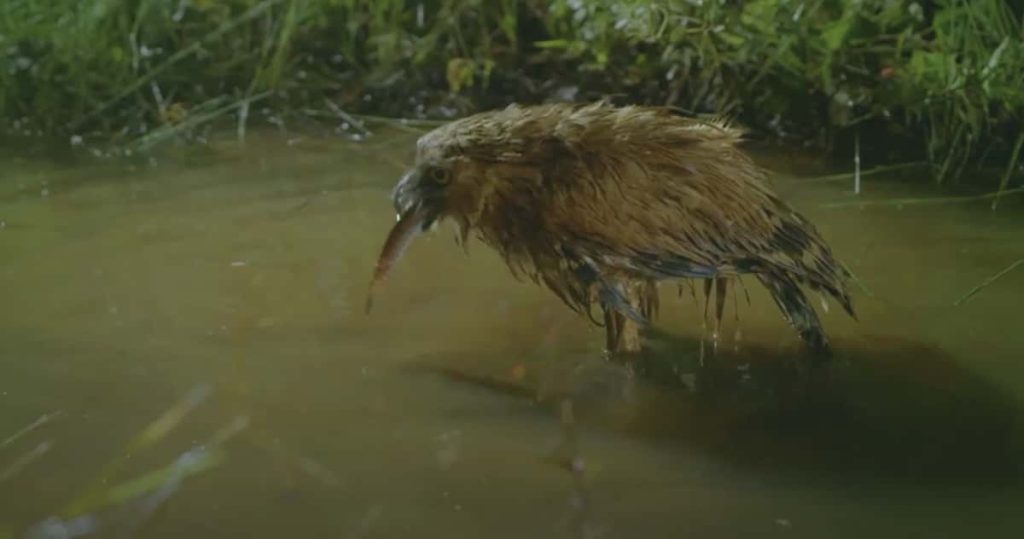
Nocturnal birds Owls live mysteriously, with distinctive features ranging from their eyes to their pellets. However, the question comes to many of us: are owls carnivores or omnivores?
About 255 species of owls live in the world. Depending on their location and species, owls’ diets and other characteristics differ.
I usually see owls hunting and eating small mammals, reptiles, amphibians, and various insects. Many owls eat carrion or plant material, but this is very rare.
Some species of owls often eat carrion or plant material when food is scarce. Now the question is: Are owls omnivores, herbivores, or carnivores?
Contents
- 1 Are owls carnivores, omnivores, or herbivores?
- 2 Is an owl an herbivore?
- 3 Is an owl a carnivore?
- 4 Is an Owl an Omnivore?
- 5 What is the owl diet?
- 6 How much do owls eat?
- 7 How do owls eat their food?
- 8 Physical Characteristics of Carnivorous Birds Owls
- 9 The owl can rotate its head 270
- 10 Why are owl ears special?
- 11 Why are owl feathers special?
- 12 Owl night vision eyes
- 13 How strong are owls talons?
- 14 How is the beak of the owl?
- 15 When Do Owls Eat?
- 16 Do owls eat other owls?
- 17 Do owls eat fish from ponds?
- 18 What do owls eat in the desert?
- 19 Do owls eat eggs?
- 20 Do owls eat earthworms?
- 21 What do owls eat in the winter?
- 22 FAQs
- 23 Conclusion
Are owls carnivores, omnivores, or herbivores?

Like other birds of prey like eagles, hawks, and kite birds, owls have beaks that are developed for catching and killing prey. But like other birds of prey, owls do not tear their prey apart with their beaks. They swallow their whole prey. Also, when other birds of prey rest at night, owls go hunting.
Is an owl an herbivore?
Owls’ beaks are usually developed for swallowing prey, their stomachs are fit for digesting meat and collecting nutrients, so they usually do not eat leaves, stems, flowers, fruits, and seeds.
However, occasionally some species of owls have been observed eating parts of the plants. However, there is no plant part in their preferred diet and when they lack animal food, they only eat plants as food.
Is an owl a carnivore?
Yes, the owl is considered a carnivorous bird whose preferred diet includes a variety of small animals such as mammals, birds, reptiles, and amphibians. Besides, they sometimes prey upon different kinds of insects.
However, they do not bite prey into pieces with their beaks, they swallow the prey, and indigestible parts of food which are called pellets such as bones, feathers, hairs, teeth, etc. are extricated through their mouths.
Is an Owl an Omnivore?
Owls are not omnivorous birds because they do not live on a multi-layered diet of plants and animals like birds such as the American Crow, Northern Mockingbird, American Robin, Eastern Bluebird, Blue Jay, Wild Turkey, etc.
Here, let’s say that humans eat multiple layers of food, so humans are known as omnivores, but owls are not.
What is the owl diet?

Since owls are carnivores, they prey upon small animals. Many species of owls existing in the world can be found almost everywhere except in the polar regions.
Not all the same species of animals are found in all parts of the world, so the owl’s diet can vary based on habitat and species of the owl.
Owls have a long food list. Small animals, small birds, amphibians, reptiles, fish, insects, crustaceans, and various invertebrates are among their favored food sources.
However, some species of owls have been observed eating various plant parts, but that is rare.
How much do owls eat?

Generally, larger species of owls require more food than smaller species of owls. Below are the names of some owl species and their approximate daily food requirements.
| Owl Species | Daily Food Consumption (Approximate) |
| Barn Owl | 2 to 4 small mammals or 1 large mammal or 3 to 6 mice. |
| Great Horned Owl | 2 to 4 medium-sized mammals or 2 to 5 rodents. |
| Snowy Owl | 3 to 5 lemmings or 2 to 4 small mammals. |
| Barred Owl | 1 to 3 small mammals or 2 to 3 rodents. |
| Eastern Screech Owl | 2 to 3 small mammals or 4 to 5 insects. |
| Burrowing Owl | 6 to 8 insects or small rodents. |
| Northern Saw-whet Owl | 2 to 3 small mammals or 4 to 5 insects. |
| Tawny Owl | 2 to 3 small mammals. |
| Long-eared Owl | Long-eared Owl or 1 to 2 small mammals. |
| Short-eared Owl | 1 to 2 small mammals. |
| Screech Owl | 1 to 2 small mammals. |
| Northern Saw-whet Owl | 1 to 2 small mammals. |
| Elf Owl | 1 to 2 small mammals. |
How do owls eat their food?

Whereas birds of prey like eagles, hawks, etc. hunt their prey and tear the flesh with their beaks, owls have a different way of eating their diet.
First, they kill their prey with their strong beaks and sharp claws, then devour the whole prey. If the owl’s prey is relatively large, the owl first cuts the large prey into several pieces and then gulp the pieces.
Although owls swallow their prey, their digestive system is developed in such a way that the indigestible materials of their food, such as feathers, hair, bones, teeth, skulls, etc., are stored in aggregates called gizzards and then expelled through the mouth, known as owl pellets.
Physical Characteristics of Carnivorous Birds Owls
Owls have several distinct physical characteristics setting them apart from other birds of prey. Some of the unique physical characteristics of owls are pointed out below:
The owl can rotate its head 270

Instead of having eyeballs like human beings, owls have eye tubes. Because of this, owls, like humans, cannot move their eyes. An owl has to turn its head to see something.
Many people think that owls can turn their heads up to 360 degrees, but actually, they can turn their heads up to 270 degrees, whereas a human is capable of turning his head up to 180 degrees.
Since owls can turn their heads up to 270 degrees, they can easily track prey and predators from a fixed position. Besides, it has a vital role in protecting their territory and the hands of other rivals.
Why are owl ears special?
The ears of owls help them a lot as an indispensable part of catching prey. Several species of owls have two horns or ear-shaped tufts of feathers on their heads that many of us mistake for owl ears.
Small feathers cover The owl’s ears on either side of the mouth. Owls can detect even the tiniest sounds of prey and predators with their ears.
While flying, their left ear detects sounds in the air below them, and the owl’s right ear serves to detect from where the sound is coming.
Due to their sense of hearing, they can determine the exact location of the prey, which makes them efficient birds of prey.
Why are owl feathers special?
Owl feathers have evolved to help owls fly silently when they fly. The feathers on their two wings help them cut through the wind very easily, which prevents excessive noise from their wing feathers.
In addition, the color of the feathers of the owls living in a particular area helps them blend in with the natural environment, adding to their capacity to hunt more efficiently.
They sit in search of prey in one place. The owls are not easily recognized by the hunters because they blend into the natural environment.
When the prey comes within reach of the owl, the owl attacks and captures the prey.
Owl night vision eyes
Owls’ eyes are developed to see in low light, so they can see 35–100 times better than humans in low light, especially at dusk, dawn, and full moon nights.
Being nocturnal birds, owls’ retinas have fewer cones and more rod cells than other animals, making them convenient to see in low light, while high light makes owls’ eyes see uncomfortably, developing much difficulty to see. So, they take shelter in any low-light place during the day.
But in low light, these eyes make them an efficient nocturnal bird of prey.
How strong are owls talons?
Similar to other birds, Owls have four toes on each foot. The ends of these fingers have long, sharp, curved talons made of keratin.
Talons of owls grow continuously like human fingernails. The talons of owls have an important function in catching prey, carrying prey killing prey, etc.
With these powerful talons, owls can easily carry their prey from one place to another. Their talons serve to kill prey, with sharp talons owls can pierce the flesh and skull of their prey.
The fist of an owl is 10 times stronger than a normal human’s, which enables it to kill a victim easily.
How is the beak of the owl?
owls have no teeth but the owl’s beak design of owls is structured to grip and tear prey. However, owls do not tear the prey’s flesh with their beaks; if it is a large prey, the owls cut their prey into several pieces before eating and if it is a small prey, owls swallow the prey whole can be seen panting like dogs when overheated.
Owls open their beaks and pants just like dogs until their body temperature drops. The top and bottom of the owl’s beak act like scissors, perfect for cutting anything.
When Do Owls Eat?
Nocturnal animals usually rest during daylight and hunt and eat prey during the low light of night. Owls are generally more active in low light at dusk and dawn. For them, it is the perfect time to hunt, however, there are several species of owls to prey on and eat during daylight hours.
Notable among them is the snowy owl. Astronomer lights are also great for hunting owls because owls hunt throughout the night in astronomer lights. However, if owls think they are full after eating prey, they stop hunting for the day.
Do owls eat other owls?
One of the key reasons why any owl species survive longer in captivity than in the wild is the possibility of being killed by other predators or by other species of owls.
Especially large species of owls are often seen preying on smaller species of owls. Topping this list is the great-horned owl.
Several owl species have been observed preying on their species, with Eastern Screech-Owls at the top of the list.
Owls have generally been observed to prey on their species when faced with severe food shortages. Barn owls have even been traced to kill and eat their young due to a shortage of food, but this happens rarely.
Do owls eat fish from ponds?

The species of owls can be observed to change their diet in particular. Even owls are seen hunting and eating small animals.
But there are several species of owls, like the Ketupa owl, the Scotopelia owl, etc., better known as fishing owls.
The main diet of all these owl species is fish. They usually live near various bodies of water, like ponds, and eat fish from the bodies of water at dusk and dawn.
In comparison to other species of owls, these particular species have evolved their bodies to hunt fish.
What do owls eat in the desert?
Although for owls, deserts are not ideal habitats, several species of owls, such as barn owls, great-horned owls, long-eared owls, burrowing owls, and western screech owls, have been seen living in deserts.
Food crises in the Deserts are more than in other regions. However, owls have learned to adapt to the desert.
Owls hunt mammals such as rabbits, hares, and rodents as prey in the desert and there are also lizards, scorpions, and large insects such as centipedes, beetles, and moths in the list of their prey.
Owls are also seen to prey on small desert birds. However, owls living in the desert have to change their area frequently due to a lack of food.
Do owls eat eggs?
Being carnivores, owls have a variety of small birds in their favorite diet, but they have never been seen eating the eggs of other birds or their eggs.
Many owls have been seen eating the hatchlings of a bird’s egg, but it has been found that many birds of prey are breaking the eggs of other birds, and many reptiles eat the eggs of birds, but It has never been found that any owl is eating a bird’s egg.
However, the diet of owls completely differs from other birds of prey. Where other birds of prey tear their prey apart, owls swallow their prey. This may be the reason why owls do not eat any bird’s eggs.
Do owls eat earthworms?
The owl’s diet consists of a variety of insects, including a variety of small animals. We find birds like crows, blackbirds, robins, hawks, thrushes, starlings, etc. eating earthworms in nature.
But the earthworm, known as the farmer’s friend, is a favorite food of owls. Earthworms are generally the perfect food for small-species owls and baby owls.
Because earthworms contain protein, fat, and other important nutrients, they are the main source of complete food.
Earthworms usually come out at night, whereas owls are nocturnal, so earthworms often come within sight of owls, making them easy prey for owls.
What do owls eat in the winter?
Owls usually mat in winter, and spring is the mating season, so this is the time when most species of owls roost and live with their mates, incubating their eggs and caring for the hatchlings with important tasks such as feeding them, hunting for them, etc.
However, owls do not change their diet during the winter. All food they take in during other seasons is also eaten in the winter.
If, for some reason, a certain class of animal moves away due to overwintering or goes into hibernation, owls will not normally hunt that animal during the winter.
Due to this, that particular food will be excluded from their diet for several days. Once the food is available at the right time, the owls will start hunting that particular animal again.
FAQs
Q. Are owls omnivores?
Ans: No owls are not omnivores, they eat small animals so they are carnivores.
Q. Are owls predators?
Ans: Yes owl is a nocturnal bird of prey that usually hunts in the low light of dusk and dawn.
Q. Are owls meat eaters?
Ans: Yes owls are meat eaters because they hunt and eat a variety of small animals.
Q. Are owls predators of bats?
Ans: Although not all species of owls hunt bats, several species of owls include bats in their preferred diet.
Q. Are owls predators of chickens?
Ans: Owls’ favorite diet includes small birds. However, owls hunt and eat small chickens if they get a chance.
Conclusion
Answering the question above, Are Owls Carnivores or Omnivores, hopefully gave you enough experience about the food of owls. The diet of owls varies depending on their species and habitat.
However, owls are primarily carnivores because their preferred diet always includes meat from a variety of animals.
Their perfect hunting technique makes them an efficient carnivore. Owls’ diet makes them play an important role in maintaining nature’s ecosystem balance.
Many species of owls are now among the almost extinct species, so we need to raise more awareness about this bird so that this beautiful bird of prey does not disappear.